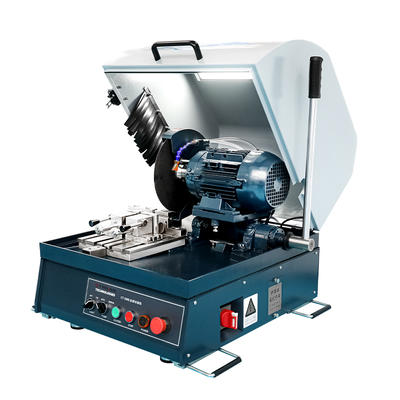The automated operation of a fully automatic large vertical cutting machine is one of its core advantages. Compared with traditional manual or semi-automatic cutting equipment, the fully automatic large vertical cutting machine achieves comprehensive automated control of the cutting process by integrating advanced control systems and sensor technology. The operator only needs to input preset programs such as cutting parameters and cutting paths through the human-machine interface before starting the equipment, and the equipment can automatically complete the cutting task without real-time human intervention.
This feature of automated operation not only greatly reduces the labor intensity of operators, freeing them from tedious manual operations and focusing on higher-level monitoring and management tasks, but also significantly reduces labor costs. Due to the reduction of manual intervention, enterprises can save a lot of human resources, reduce labor cost expenditures, and thus improve overall economic benefits.
The automated operation of the fully automatic large vertical cutting machine can be realized, which is inseparable from the technical support behind it. These technologies mainly include advanced control systems, sensor technology, and automation algorithms.
Fully automatic large vertical cutting machines usually use high-performance PLC (programmable logic controller) or CNC (computer numerical control) systems as the control core. These systems have powerful data processing and real-time control capabilities, can receive and process various information from sensors and human-machine interfaces, and accurately control the cutting process according to preset programs and instructions. These systems also have self-diagnosis and fault alarm functions, which can detect and handle equipment failures in a timely manner to ensure the stability and continuity of the cutting process.
Sensors are key components for fully automatic large vertical cutting machines to achieve automated operation. They can monitor various parameters in the cutting process, such as cutting speed, cutting depth, cutting temperature, etc. in real time, and feed this information back to the control system. Based on this information, the control system adjusts and optimizes the cutting process in real time to ensure cutting quality and efficiency. In addition, sensors can also detect abnormal conditions in the cutting process, such as material breakage, tool wear, etc., and trigger alarm mechanisms in time to avoid safety accidents.
The automated operation of fully automatic large vertical cutting machines also relies on advanced automation algorithms. These algorithms can intelligently plan and optimize the cutting process according to preset programs and instructions. For example, they can automatically select appropriate cutting parameters and cutting paths according to the characteristics of the material and cutting requirements; they can automatically adjust parameters such as cutting speed and cutting depth according to the operating status of the equipment and the cutting progress; they can also monitor and evaluate the cutting quality online based on real-time data during the cutting process. The application of these algorithms makes the automatic operation of the fully automatic large vertical cutting machine more intelligent, efficient and reliable.
The automatic operation of the fully automatic large vertical cutting machine not only improves production efficiency and reduces labor costs, but also brings significant benefits in other aspects.
Since the fully automatic large vertical cutting machine adopts advanced control systems and sensor technology, it can monitor and adjust various parameters in the cutting process in real time, so it can ensure the improvement of cutting accuracy and stability. This helps to reduce material waste and defective rate, and improve product quality and competitiveness.
The automatic operation of the fully automatic large vertical cutting machine reduces manual intervention and reduces the chance of operators contacting dangerous sources, thereby reducing safety risks. The fault alarm and self-protection mechanism of the equipment can stop and alarm in time when abnormal conditions occur to avoid safety accidents.
The control system of the fully automatic large vertical cutting machine usually adopts modular design, which is easy to maintain and upgrade. When equipment fails or needs to be upgraded, operators only need to replace or upgrade the corresponding modules without dismantling and rebuilding the entire equipment. This reduces maintenance costs and time costs and improves equipment reliability and service life.

 中文简体
中文简体 英语
英语 西班牙语
西班牙语 德语
德语


.jpg?imageView2/2/w/400/format/jpg/q/75)




.jpg?imageView2/2/w/400/format/jpg/q/75)









